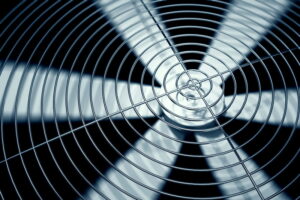
When temperatures rise during the summer, you’ll turn to the air conditioning system to cool down your house. While looking at the settings on the thermostat, you may wonder just how cool the AC could potentially make your home. On most thermostats, the lowest setting allowed is 10–15°C, and that’s too cold for most people. Can the AC actually get your house that cool? Could it potentially go farther if the thermostat settings went lower?
We think this is a good question to ask, because it’s not only a theoretical exercise. Knowing the cooling limits of an air conditioning system can help you understand some important basics about how it works and how best to use it. We’ll explain the facts about your AC’s limits below.
Cooling Capacity
The cooling capacity of an air conditioning system is the measure of how much cool air it can put out over a specific amount of time. Or, more specifically, how much heat it can remove, since air conditioners operate by pumping heat from the indoor air to the outdoor air. An air conditioner’s capacity is measured in units called tons. One ton of cooling is equal to 12,000 BTUs of heat removed from the air per hour.
The average home will require an AC with 1 to 10 tons of cooling capacity. However, you can’t decide to have a more powerful system to get more cooling—an air conditioner that’s too powerful will cause the system to shut down early. In other words, you must have a specially matched cooling capacity for your home. And this is where the second measurement of AC cooling comes into play…
Temperature Differential
The temperature differential of an air conditioning system is how much it can lower the temperature of the air. Capacity measures the amount of cooling power, but not how cool the air can get. When an AC is sized correctly for a house, it will be able to lower the temperature of the air it draws in through the return ducts by a maximum of 11°C. No matter how low you set the thermostat, this is the limit of how cool the air will get. (And setting the thermostat lower doesn’t make the AC cool the air any faster, it just tells the AC to run for longer to reach the target temperature.)
The good news is that a temperature differential of 11°C is enough to handle the heat of most days. Even if the outdoor temperature rises to 37°C, you can still lower it down to 26°C, which is comfortable for most people. When you consider that insulation already keeps some of the heat out of your home, your AC has an easier job already. Keeping your house at an energy-saving thermostat setting of 25°C shouldn’t be difficult or put too much strain on the air conditioner.
If you have an AC that can’t handle the heat, no matter how you set the thermostat, you may need air conditioning repair in Campbell River, BC. We’ll see that your AC gets back in shape.
Need help with getting your house cool. Just look to Temprite Climate Solutions. For a job done right, call Temprite!
